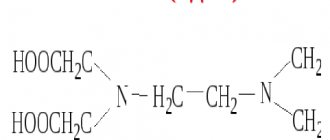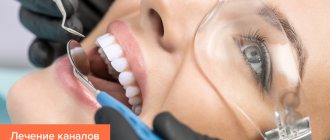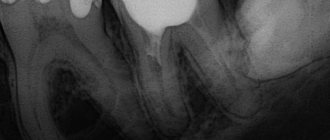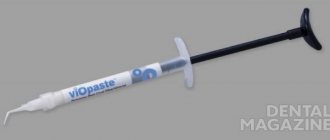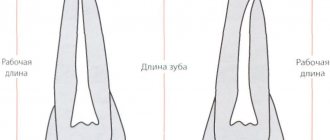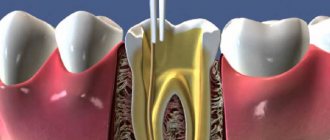Content
hide
1 Why is it important to treat baby teeth on time?
2 Features of filling baby teeth in children
3 Is silvering teeth an alternative method?
4 Cost of filling baby teeth
5 Technical points
6 Why is it necessary to fill teeth?
7 More about anesthesia
8 What to do if you don’t want to fill your baby teeth?
Caring for children's teeth is an acute and problematic issue. How many things violate children's oral hygiene: frequent consumption of sweets, violation of a healthy diet, irregular teeth brushing. The result is diseases of baby teeth, unpleasant symptoms and, of course, a visit to the dentist. This is stressful for both adults and children.
Parents worry about the baby, but the child is simply afraid of unpleasant and unfamiliar sensations. Fortunately, in modern dental clinics, doctors find an approach to a young patient, creating a friendly atmosphere so that the child does not regard the treatment as something scary.
It is under such conditions that filling of children’s baby teeth takes place, if parents make the right choice of a medical institution. In addition, delaying filling is an extremely dangerous undertaking, from which nothing good will come. Dental pathology affects all organs and systems, leading to complications and impaired formation of permanent teeth.
Why is it important to treat baby teeth on time?
Sanitation of the oral cavity and filling of baby teeth is necessary in order to eliminate inflammatory processes, the growth of bacterial flora, and also to create normal conditions for the formation of a healthy bite and full-fledged permanent teeth.
Caries of primary teeth is a problem that needs to be addressed immediately. It is necessary to carefully examine the child's teeth in good lighting. You can do this during hygiene procedures. You should pay attention to spots, light areas on the enamel, violations of its integrity, black spots, and gum pathology. These minor symptoms indicate that there is an increased risk of infection spreading into deep tissues.
The most common and at the same time erroneous opinion is that baby teeth do not need to be treated, because they will fall out anyway. But while the child is sick, his entire body suffers, the immune defense is disrupted, the digestive system malfunctions, deep tissues are involved in the process, as well as permanent teeth that will not fall out and will serve the person for the rest of his life. The focus of the pathology spreads the infection throughout the body; secondary complications may occur throughout the body, because germs and bacteria are spread along the bloodstream.
Features of filling baby teeth in children
Modern pediatric dentistry has a variety of tools, equipment and materials that make fillings high-quality and long-lasting. The most commonly used is composite. This material has the property of self-hardening. A composite complex with glass ionomer cement is also used. This filling material adheres well to the surrounding tooth tissues, is resistant to external factors, and lends itself well to working with tools.
Technical points
In general, filling teeth follows the same principle as installing fillings in permanent teeth. The only caveat is that the filling material is deliberately installed for a certain time, since the tooth itself will fall out over time. Another point - during filling, the doctor works with the diseased and adjacent tooth to prevent the spread of the infectious process.
In order to cure caries of primary teeth, the dentist uses the following techniques:
- manual tissue preparation is used. The use of machinery is required if the cavity is deep enough and manual processing is not enough;
- treatment with chemicals that eliminate the source of destroyed tissue;
- ordinary processing, which involves the use of a drill.
Of course, when filling teeth, anesthesia is used so that the child does not feel pain and the doctor feels comfortable working. It is important to choose the right anesthetic, administer a sufficient amount, and be careful with dosages.
Treatment of a baby tooth is a more rational choice than tooth extraction. Preservation of the jaw area plays a role in the formation of the bite, ensures normal chewing function, diction, and facial contours. Extraction is carried out only in a number of cases when this method is the only one possible. The choice of treatment method is decided by the attending physician on the basis of diagnostic data, as well as based on the characteristics of the young patient’s oral cavity.
The advantage of filling over silver plating
Silvering of teeth is the smearing of teeth with silver nitrate, which has an antiseptic effect. Its disinfecting properties should stop the spread of caries.
However, silvering is only a method of preserving destruction, permissible only in the very early stages, and not a treatment. In some cases, silvering does not help, and the carious process moves on imperceptibly underneath it.
Giving a child a filling is the most effective way to solve the problem of caries.
You can make an appointment at the Shifa pediatric dentistry by calling the contact number or using a special form. We try to provide our clients with the most favorable cost of treatment - check out the price list on the “Prices” page.
Why is it necessary to fill teeth?
The main problem that causes the need to fill baby teeth is caries. This is an infectious process that is caused by pathogenic bacteria and negatively affects the structure of the tooth, corroding its tissue. The peculiarities of the oral cavity are that it contains extremely aggressive flora and any infectious process occurs at a high speed. This once again shows how important it is to consult a doctor in a timely manner, or even better, to visit him as part of preventive examinations.
It’s not for nothing that children are told how harmful sweets are, especially at night. Sweets contain increased amounts of glucose, which is an excellent basis for the development of bacteria. Food debris lingers in hard-to-reach areas of the teeth and spaces between them. During the night, bacteria accumulate there, the waste products of which eat away the enamel and damage the teeth. Add to this missed brushing of teeth, reduced immunity, and you’re done – caries of baby teeth.
If caries progresses, neighboring teeth shift, deformation of the dentition occurs, and the bite and function of the teeth are impaired. At the same time, the germination of permanent teeth is disrupted - there is no room left for them due to displacement. In addition, the permanent tooth grows in place of the milk tooth, and if there was a source of infection there, it will grow in the appropriate condition.
How fillings are done in Shifa dentistry
Dental treatment is possible only with the child’s consent, willingness to open his mouth and permission to put a filling. In case of a high level of anxiety, psychological preparation for treatment is indicated; it consists of preparatory teeth cleaning and demonstration of the stages of treatment on a model of artificial teeth. Give the pediatric dentist the opportunity to provide your child with details about the upcoming procedure at the first visit. Having experience communicating with children of different ages, the doctor can predict the child’s reaction.
For young children (up to 3 years old), as well as in the case of a child’s categorical refusal of treatment, sedation may be used.
The installation of children's fillings takes place in the following sequence:
- topical anesthesia - treatment of the gums with painkillers to reduce sensitivity at the site of the upcoming injection;
- local anesthesia - injection into the gums in the area of the upcoming treatment;
- cleaning the affected tooth structures using a bur under the control of a caries detector;
- direct filling;
- grinding and polishing the filling surface.
The installation of fillings in our clinic complies with international standards of pediatric dentistry.
More about anesthesia
Local anesthesia is not required in all cases. It is used only when caries is deep or medium. If it is necessary to numb the area being treated, the dose is carefully calculated, the sensitivity of the injection site is first reduced, and then the drug is administered. It is important to consider the patient's age and weight when choosing the dosage and concentration of the drug.
What to do if you don't want to fill your baby teeth?
Of course, you can do without installing a filling. But you will have to worry about this in advance. If the process is started, it is better to listen to the opinion of the attending physician and thereby save the baby from unpleasant consequences. How to avoid caries?
- Even while the fetus is gestating, the mother can improve the condition of its future teeth. To do this, it is worth enriching your diet with calcium, fluorine and phosphorus. the increased content of these microelements covers the expenses of the mother’s body and is the basis for the formation of the child’s skeleton and teeth;
- Once children's teeth are mature, they require daily care. This is important for removing food debris and removing harmful acids that destroy enamel. It is worth choosing special brushes and pastes that enrich the enamel with minerals and are gentle on teeth and soft tissues;
- The choice of paste should be made together with the pediatric dentist. In principle, until the age of 2, the toothpaste is not used, and instead of a brush, a device is used that is put on the finger and cleans the teeth. Next, you should consult a doctor and he will select care products based on the patient’s characteristics;
- Taking care of your teeth should become a habit for your baby. Parents can play with this and talk about the benefits of hygiene in an accessible form. Visits to the doctor should be treated in the same way. You should not scare your child with an evil dentist, to whom they will take him if he does not brush his teeth. Visiting a doctor is not a punishment, but a common procedure that you need to get used to since childhood;
- Parents should control baby food, the presence and quantity of sweets in it. It is better to replace sweets and chocolate with natural delicacies and fruits in moderation;
- Preventative visits to the dentist will consolidate the effect of proper dental care and allow for early diagnosis of pathology.
Choosing a clinic for filling baby teeth is a responsible decision for parents. Contact those institutions that use modern technology and medications and employ qualified pediatric specialists. And for the child, the atmosphere and the sensations that he experiences during a visit to the doctor are important.
Types of fillings in pediatric dentistry
The optimal filling material is selected by the pediatric dentist after a thorough examination of the condition of the tooth. The choice depends on the degree of carious destruction and the age of the child. The following fillings are available for filling baby teeth:
Glass ionomer cement (GIC)
The most popular among this group is “Fuji”, made in Japan, intended for restoring temporary teeth in children. In addition, it can be used as a sealant for fissures (natural depressions between the cusps) of temporary and young permanent teeth (immediately after eruption). Main advantages of the JIC:
- hydrophilic, i.e. not afraid of moisture; this property makes it possible to achieve high-quality restoration in young children with a low level of cooperation; when working with GIC, there is no need to use a saliva isolation system, and this reduces the duration of treatment;
- GIC releases fluorine throughout the year; this helps strengthen the remaining tooth walls and prevent recurrent caries;
- non-toxic and does not cause allergic reactions.
Photopolymers or light fillings
They are also commonly called light composites. They consist of resin and nanoparticles filling it. This is the most popular material today all over the world. Photopolymer fillings harden under the influence of radiation from a special lamp. Photopolymers allow:
- recreate the natural shape of the tooth and maintain chewing efficiency;
- achieve excellent aesthetics, since the arsenal of photopolymers has a wide range of colors and shades that can be selected individually, focusing on the color and transparency of the dental tissues.
A mandatory requirement when working with photopolymers is compliance with the protocol for applying an adhesive system - a resin, which will ensure the “weaving” of the composite into the structure of dentin and enamel, and reliable fixation of the filling, as well as the use of a system for isolating teeth from saliva (Cofferdam or Ruberdam).
Colored compomers
Fillings for baby teeth can be colored and bright. They are a combination of two materials - glass ionomer cement and a hybrid composite. Compomers are biocompatible, safe, and also help the child’s psychological mood, as they introduce an element of play into the procedure. The specialist asks the child what color of filling he wants to put in for children, and the young patient makes the choice himself. This improves cooperation before treatment intervention. In the future, colored fillings can even become a source of pride and make the process of brushing your teeth more fun and interesting.
